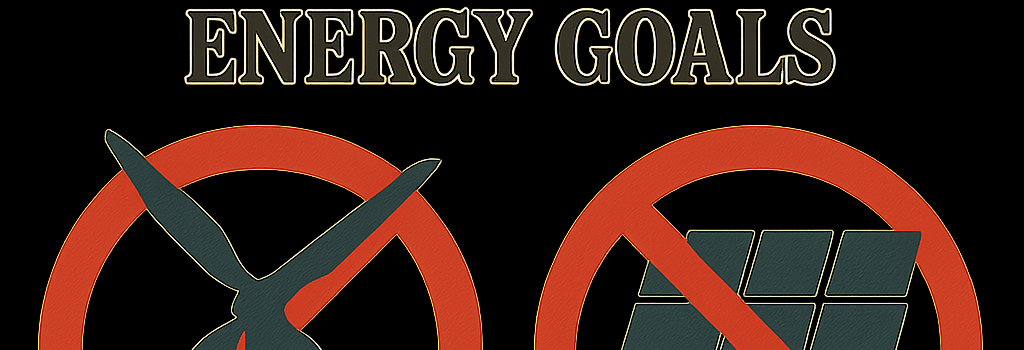Cutting Wind and Solar Incentives Undermines U.S. Energy Goals

By Aidan Hughes, Inside Climate News • Updated Aug 5, 2025
Bad energy: A clash over clean versus fossil power
When the One Big Beautiful Bill Act (OBBB) squeaked through Congress in July 2025, its backers rejoiced at proclaiming a new era of “energy dominance.” But experts warn that dramatic wind and solar incentive cuts threaten to weaken America’s grid, raise consumer costs and cede global clean-energy leadership.
The rhetoric and roots of ‘energy dominance’
“Congress has taken decisive action to advance President Trump’s energy dominance agenda,” declared API CEO Mike Sommers. With Trump’s February executive order establishing the National Energy Dominance Council—mandating expanded fossil production, lower prices and increased LNG exports—the administration doubled down on boosting oil and gas even as it scaled back renewable incentives.
EPA Administrator Lee Zeldin hailed it in the Washington Examiner as “a modern-day version of how our Founding Fathers secured our freedom.” But critics argue that energy security in the era of AI, data centers and electrified transport depends on diverse, affordable renewables and storage, not just hydrocarbons.
Modeling the impacts: Capacity gains and losses
Dan O’Brien of Energy Innovation estimates the OBBB will add roughly 140,000 barrels of oil equivalent (BOE) per day by 2034 offshore and onshore, rising to 510,000 BOE/day by 2040. But renewables suffer much larger setbacks:
- Renewable capacity additions drop 360 GW by 2035.
- Fossil additions rise 20 GW.
- Net loss of 340 GW—equivalent to powering 100 million homes.
At a typical Capacity Factor of 35%, 340 GW of solar/wind would generate roughly 1,040 TWh/year—over a quarter of U.S. electricity consumption. Instead, aging gas plants (with 50–75% heat rates) will run more frequently, driving up prices.
Technical specifics: Incentive rollbacks and supply-chain rules
The OBBB phases out Production Tax Credits (PTC) and Investment Tax Credits (ITC) for wind and solar on an accelerated schedule:
- Wind PTC drops from 2.5¢/kWh to zero by 2027.
- Solar ITC phases from 30% to 5% by 2028.
- New Domestic Content Rules require 75% U.S.-made components, with complex waivers for critical minerals.
According to Latham & Watkins, these clauses create layered compliance burdens—detailed tracking of turbine steel, inverter semiconductors and photovoltaic polysilicon origins—which may deter developers and push supply chains towards Chinese suppliers willing to absorb compliance overhead.
Surging electricity prices and consumer pain
Energy Innovation’s models and the Princeton ZERO Lab’s REPEAT Project both project household bills rising by $280–320 annually by 2035 (13–15%). As older natural gas turbines cycle more often, high seasonal heat rates mean price spikes during summer peaks and winter cold snaps.
“They should have named this the ‘Energy Inflation Act,’” says Adam Hersh of the Economic Policy Institute. “Higher costs, less generation, especially hurting manufacturing.”
Global context: China’s clean-tech push
While the U.S. scales back, China has committed over $100 billion to domestic EV manufacturing, battery gigafactories and offshore wind. The Global Wind Energy Council reports China installed 72 GW of new turbines in 2024 alone—three times the U.S. total. Pulling back on renewables risks surrendering export markets for turbines, PV panels and grid services.
New Section: Grid Resilience and Storage Integration
Electric grids increasingly rely on bulk storage and smart inverters to handle variable renewables. Advanced lithium-ion batteries now offer 4 hour cycles, ≥5,000 cycle life and round-trip efficiencies of 85–92%. Pumped hydro and emerging flow batteries can store 4–10 GWh at $150–200/kWh. By undercutting solar & wind build-out, the OBBB reduces opportunities to deploy these systems at scale, hampering grid frequency support (0.1 Hz droop control) and peak shaving.
New Section: Supply Chain Impacts and Material Sourcing
The OBBB’s domestic content requirements aim to curb Chinese dominance but lack clear pathways for U.S. producers. Key raw materials—nickel sulfate for batteries, rare earth magnets for turbines, high-purity silicon for PV wafers—are 60–80% imported. Without federal R&D grants for electrode processing and magnet recycling, project developers face lengthy customs audits and potential disqualification from incentives.
New Section: The Global Competitive Landscape in Clean Tech
Europe, South Korea and Japan are doubling down on hydrogen electrolyzers (1 MW systems at $1.2 million/MW) and advanced solar manufacturing (PERC & bifacial panels at $0.20/W). U.S. exit from the renewable tangent could see domestic OEMs lose market share in billions of dollars of turbine, panel and electrolyzer exports.
Expert Perspectives
- Cullen Hendrix (Peterson Institute): “OBBB advances fossil dominance but cedes the renewable future.”
- Samantha Gross (Brookings): “Tariffs on pipeline steel and ‘drill, baby, drill’ are contradictory policies.”
- Kevin Book (ClearView): “The economic drivers for renewables remain strong, but policy drag will slow adoption.”
Conclusion: A fork in the energy road
The One Big Beautiful Bill Act may bolster fossil-fuel output and exports, but at the cost of higher consumer bills, weakened grid resilience and lost global leadership in clean technologies. As data centers, AI compute clusters and electrified transport surge demand, the need for abundant, low-carbon generation has never been greater. Experts warn that true “energy dominance” requires synergy between fossil, renewables, storage and smart grid investments—rather than an either/or approach.
This story originally appeared on Inside Climate News.